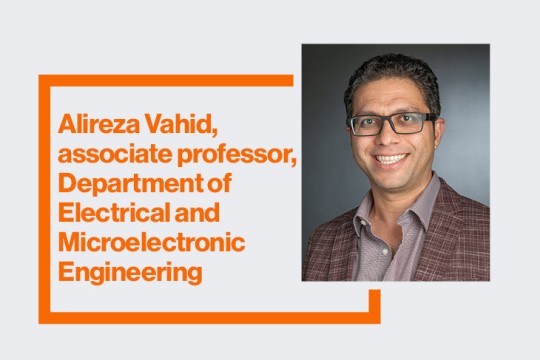RIT and the Harley School Create New Model for Sustainability Education
Collaboration is developing Living Laboratory in sustainable sciences
The Harley School and The Golisano Institute for Sustainability at Rochester Institute of Technology have launched a partnership designed to change the way elementary and secondary school students learn about sustainability.
The partnership is creating a Middle School Living Laboratory classroom that provides hands-on experiments and training to assist students in understanding the concepts and values of sustainable living. Harley has received an anonymous lead gift to fund the building of the classroom, and additional money will be raised to complete the project.
The partnership is also working to develop institutional metrics for Harley to assist in its development of sustainable processes in numerous operational areas. Both projects will engage student leadership from planning to implementation and allow students to work directly with science leaders and researchers throughout the process.
The initiative marks the first time the Golisano Institute has worked with a school in the area of sustainability. Ed Pinero, director of Golisano’s New York state Pollution Prevention Institute and former environmental executive with the White House Council on Environmental Quality, says he hopes the partnership will serve as a model for other schools in raising awareness of science and sustainability for their students.
“We have a major focus on student learning, and we hope to help our partnering schools in launching initiatives in this area to ensure that the youngest to oldest students have the necessary awareness and knowledge of sustainability,” says Pinero. “These students are our next generation leaders, and an early appreciation of sustainability concepts can have a lasting impact on the future of our society.”
As part of the Living Laboratory, professors from RIT will help Harley School students develop demonstration projects in a variety of topics, including renewable energy, recycling and sustainable design. They will also assist the school in the evaluation of its own environmental impact and work with the students to explore innovative, yet practical concepts to reduce the school’s carbon footprint.
In addition, Harley’s head of school Tim Cottrell, and teachers Karen Berger and Chris Hartman will also begin offering a course to upper school students entitled Our School: Energy, Water and Waste. The class begins this spring and includes a redesign analysis of Harley’s student center—The Beckerman Center. Students in the course will lead an architectural charrette and work with architects and engineers to make the student center LEED certified and energy independent.
The Golisano Institute chose to work with Harley in part because of the flexibility of an independent school curriculum but also because of the school’s ongoing commitment to sustainability. The partnership is one of several “green” initiatives The Harley School has begun over the last two years. For example, Harley students and faculty are currently engaged in a project to collect raw fruit and vegetable scraps, coffee grounds, and other food from snack and lunchtime for use in agriculture composts. The school as a whole has also signed up to participate in the Town of Brighton initiatives to reduce energy usage by 10 percent.
“A key to this work is to establish metrics that students of all ages can understand—such as ‘How many trees do we need to plant in order to make the operation of our swimming facility environmentally neutral?” adds Cottrell. “Students are leaders in this research. They will be able to teach themselves and each other, particularly across our divisions, about the connections between what they consume and its affect on the environment. This is a frame of reference or habit of mind that will be critical for them and future generations.”














